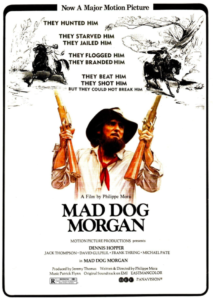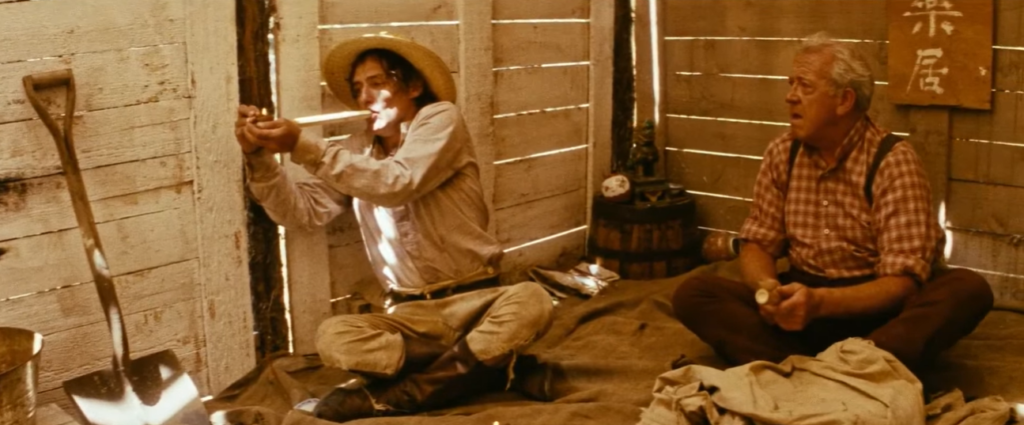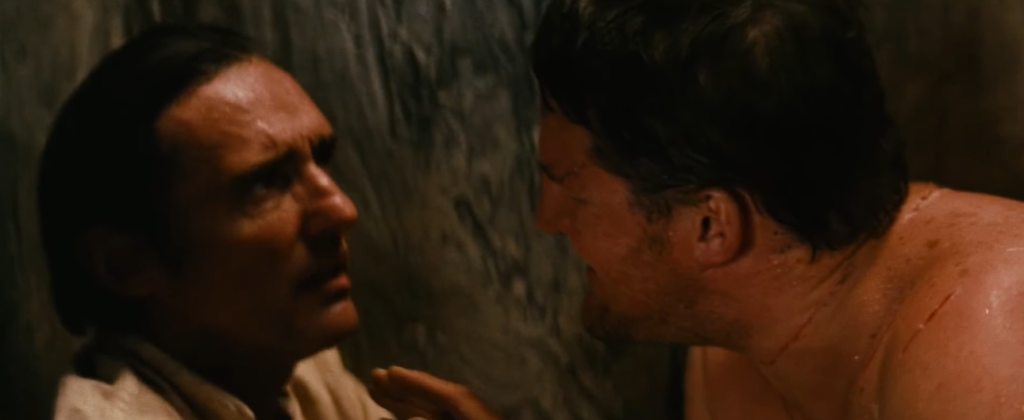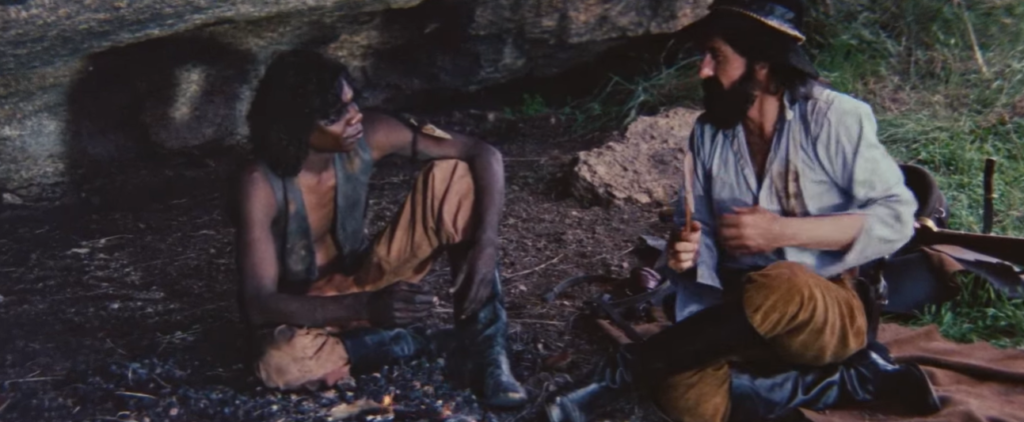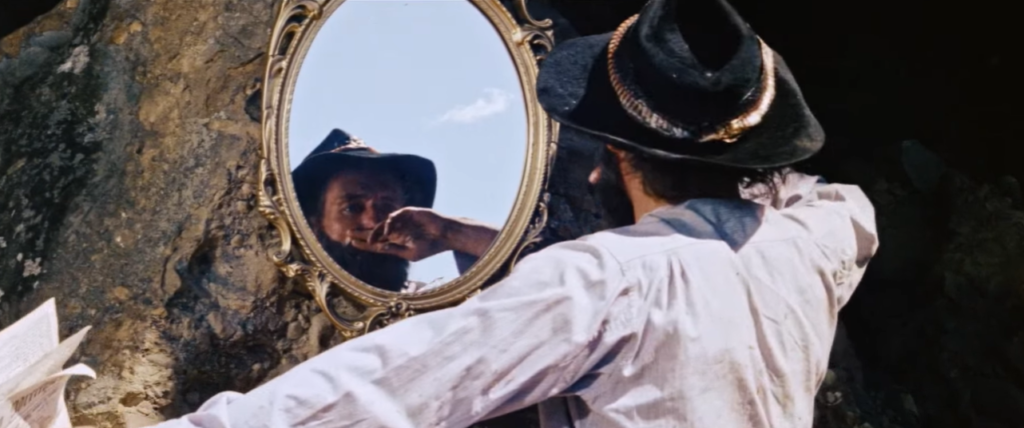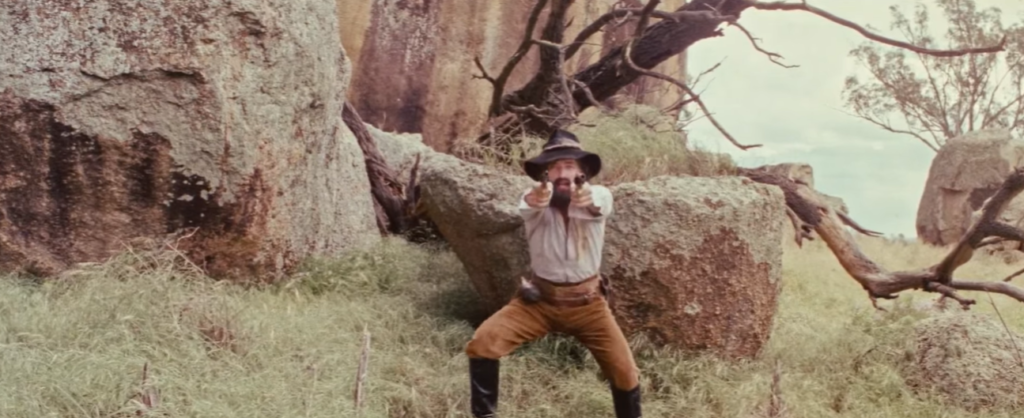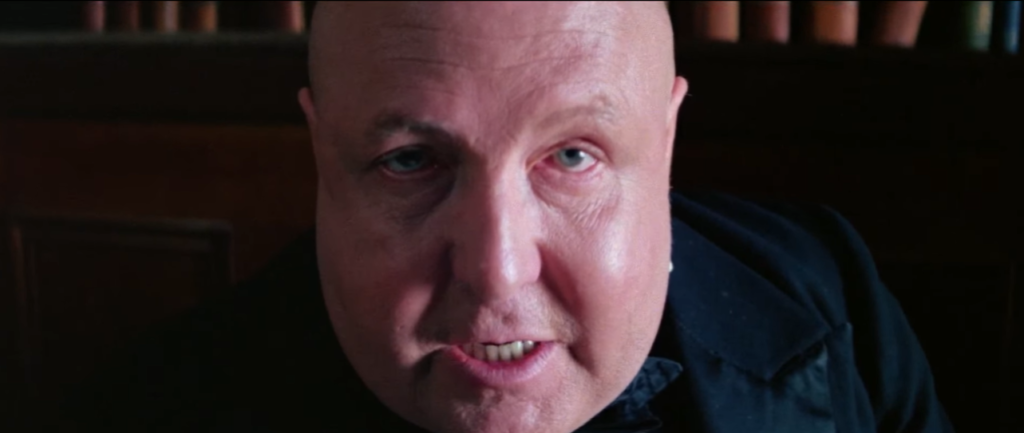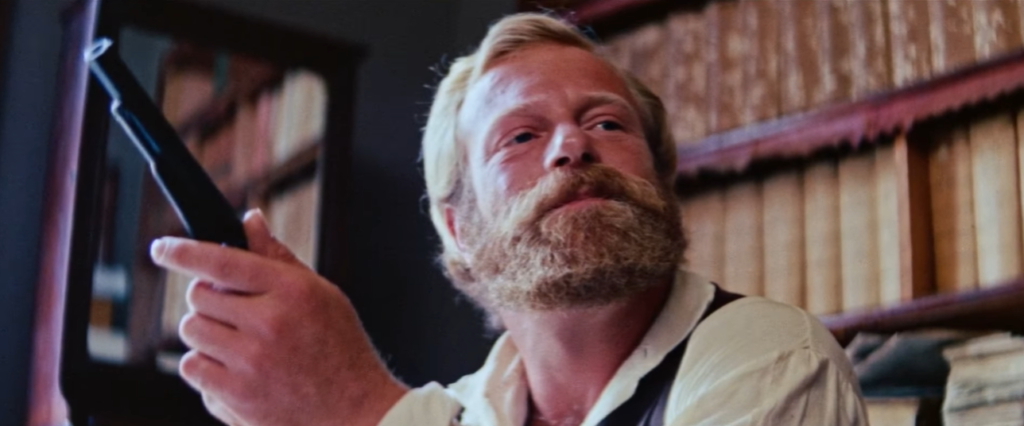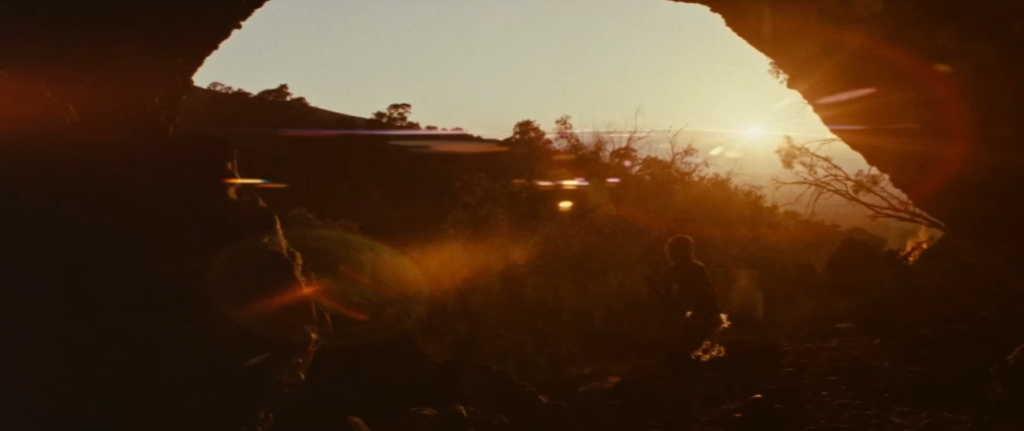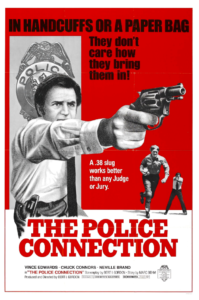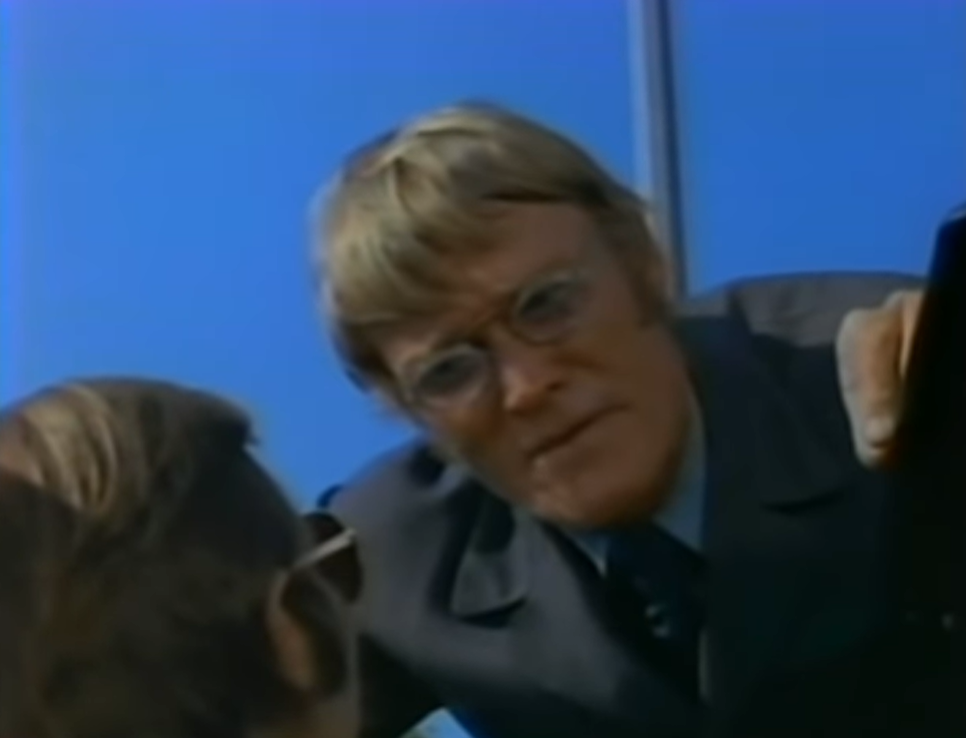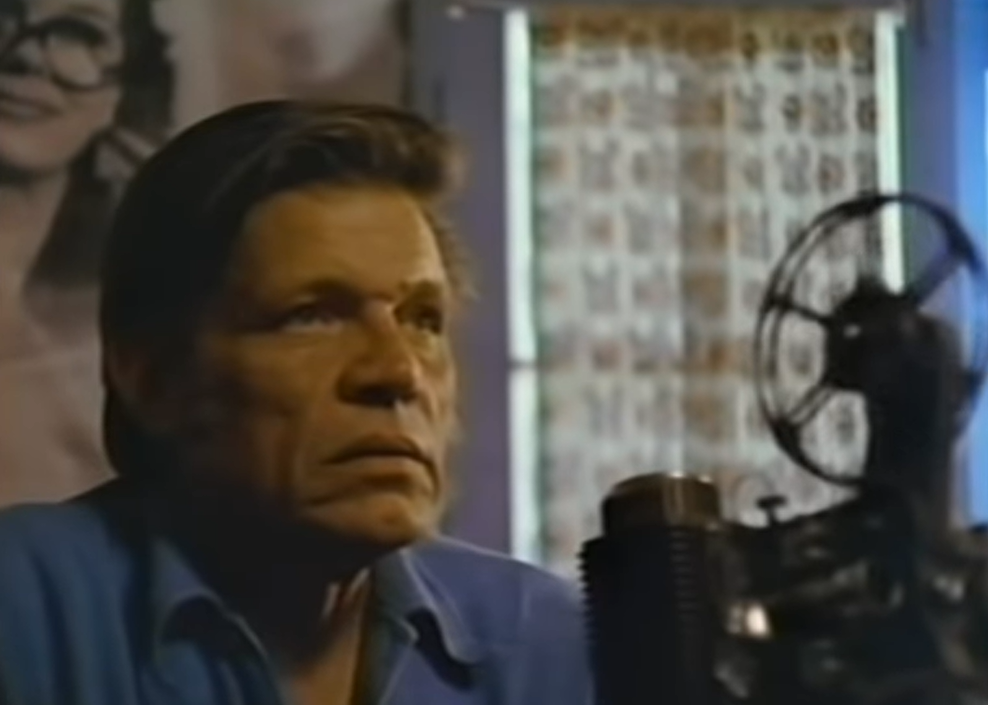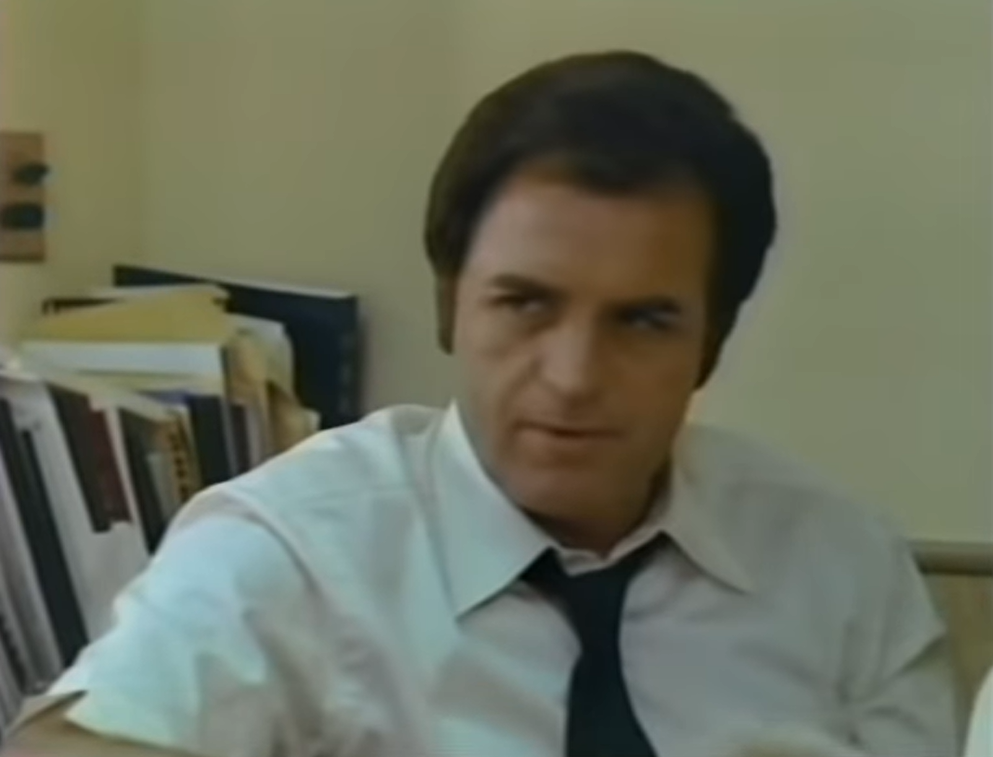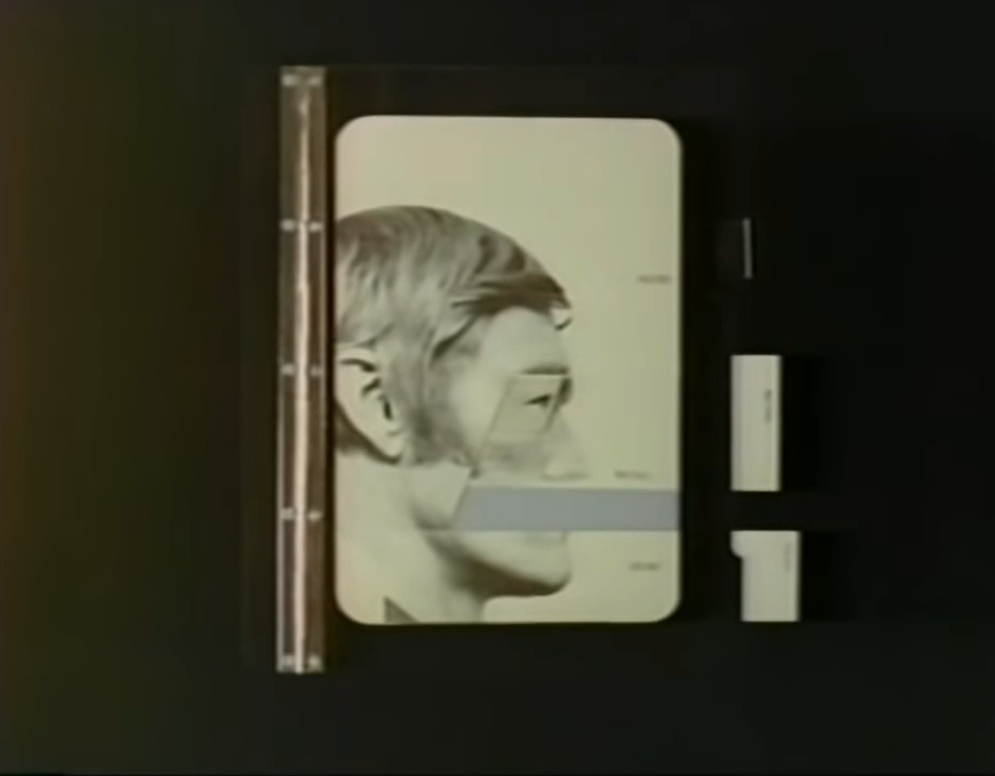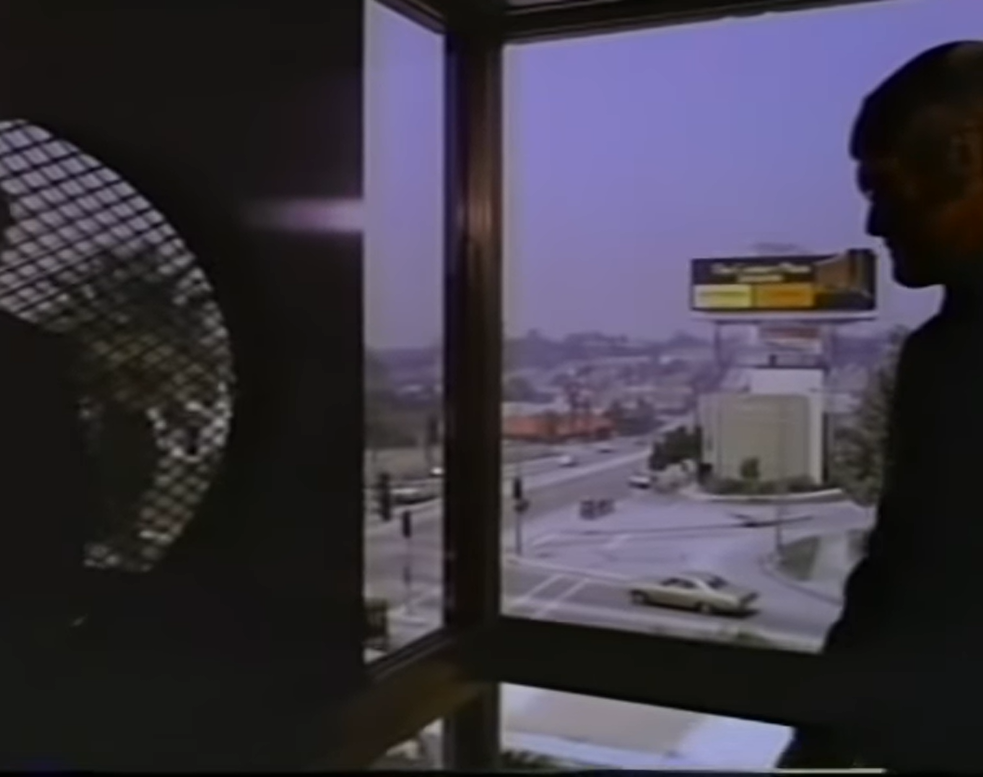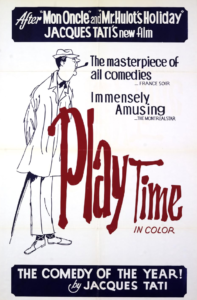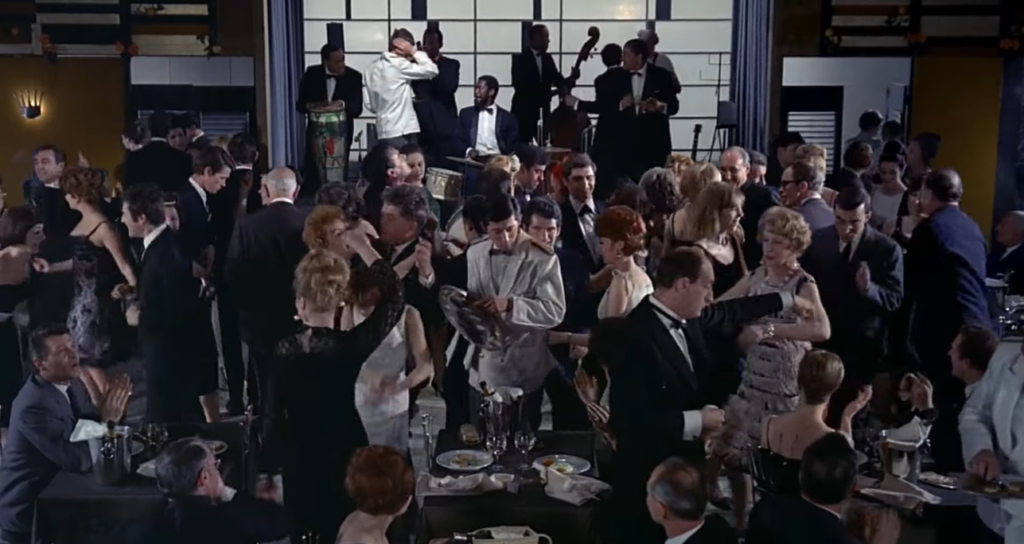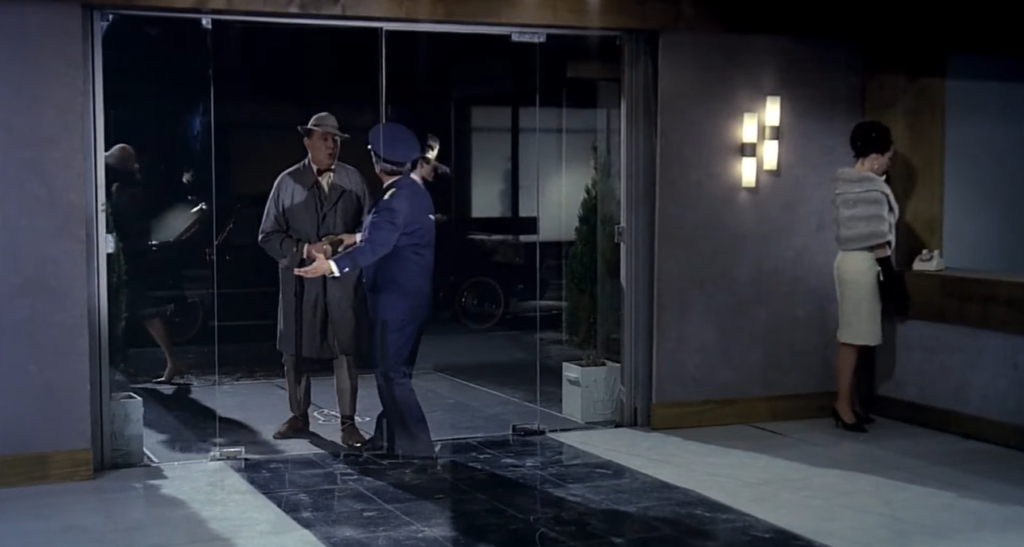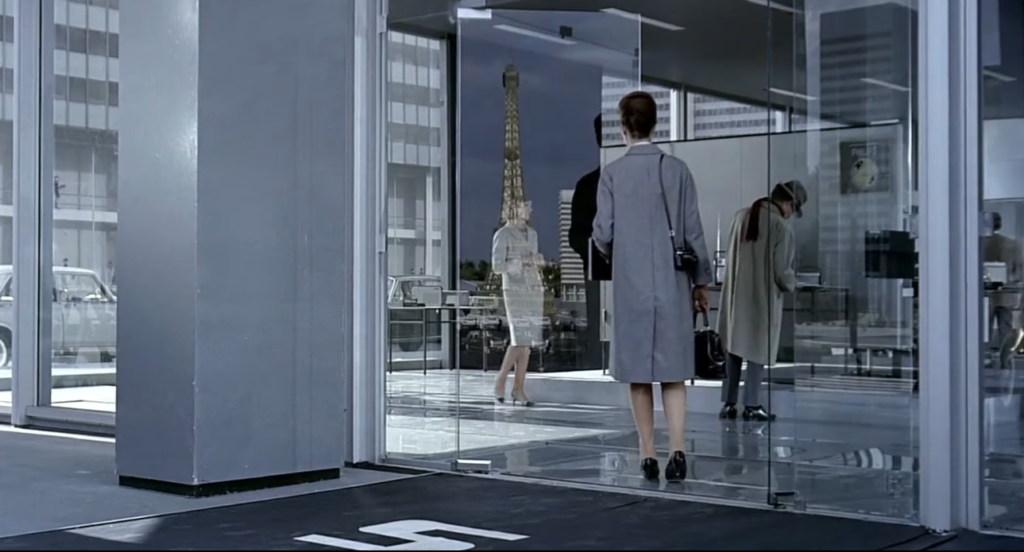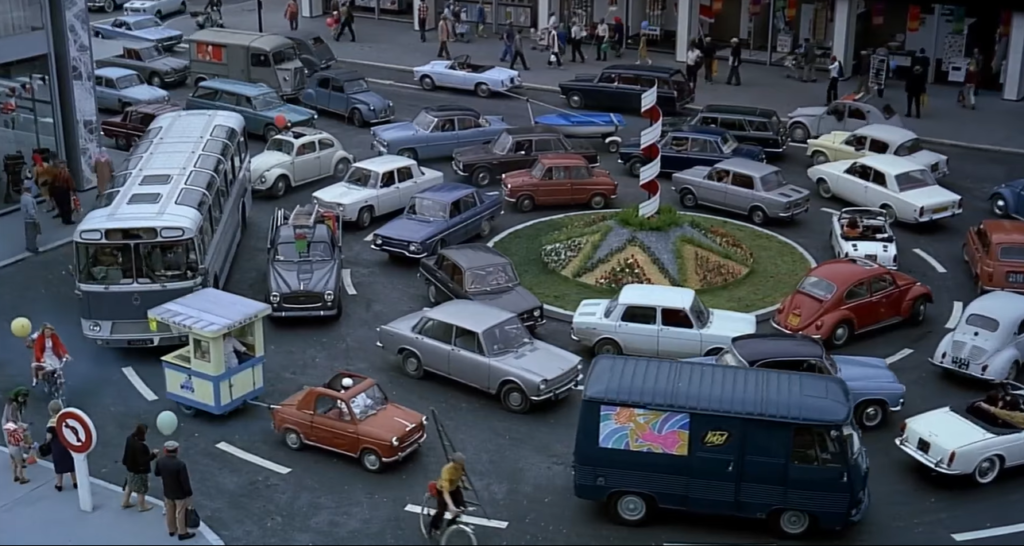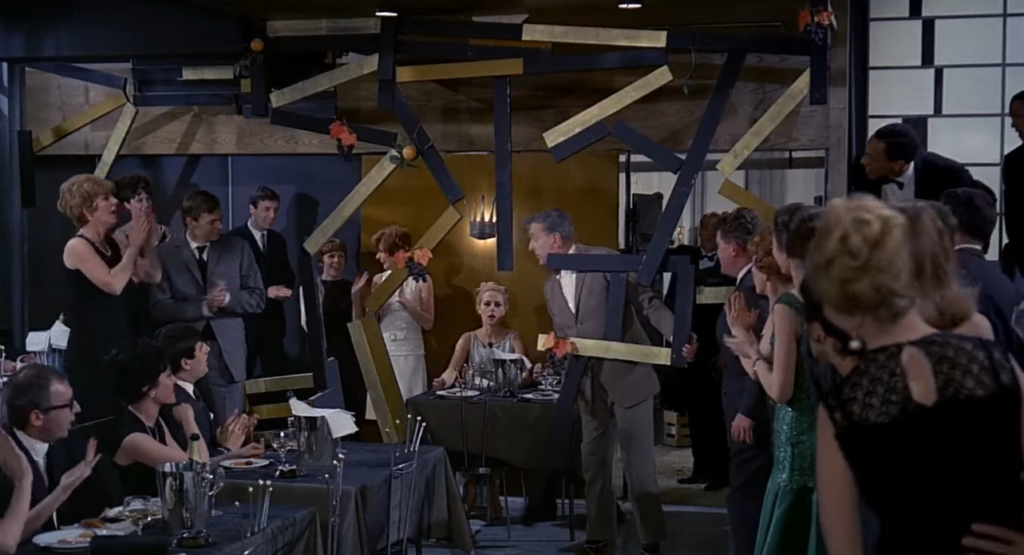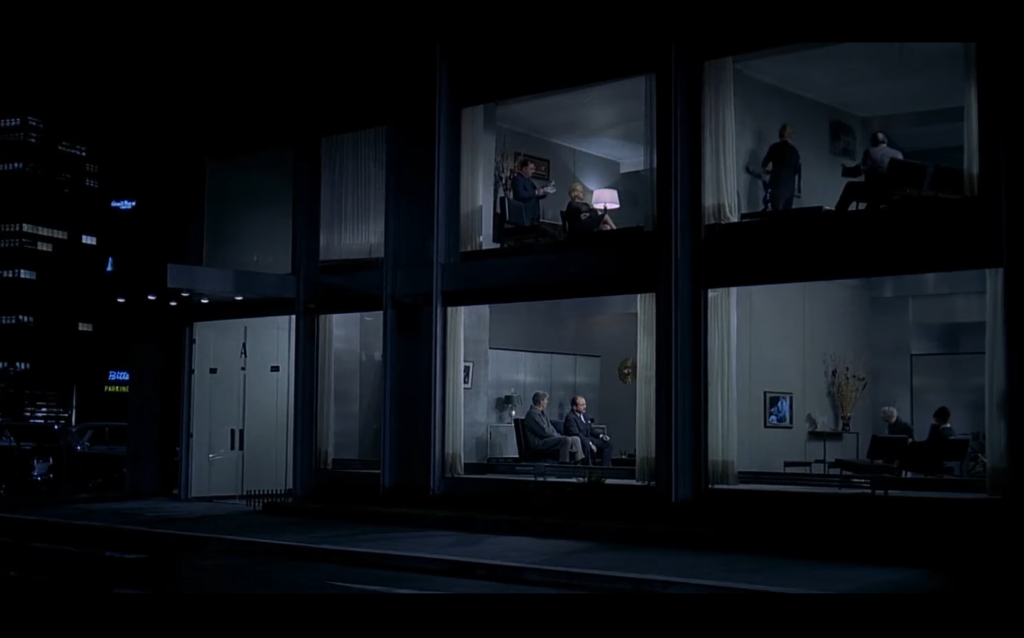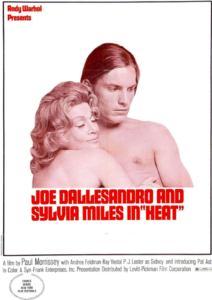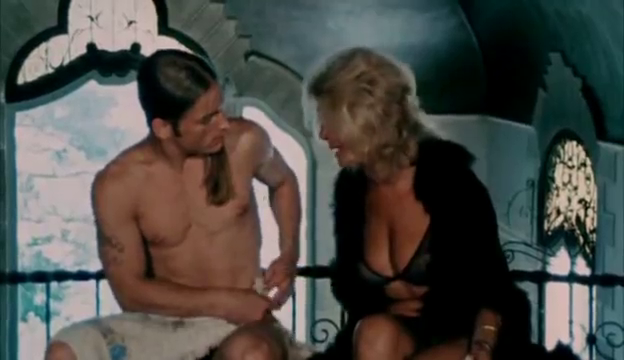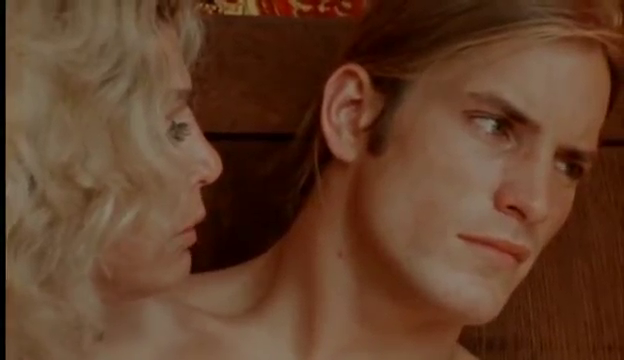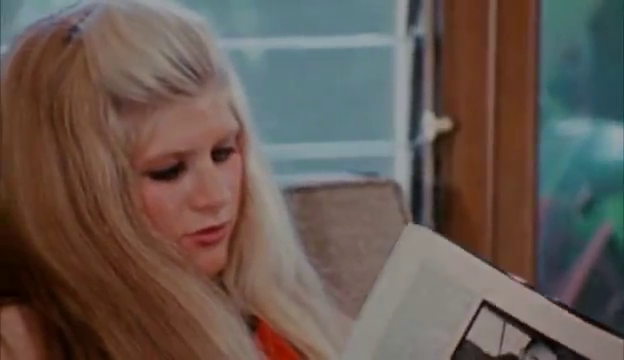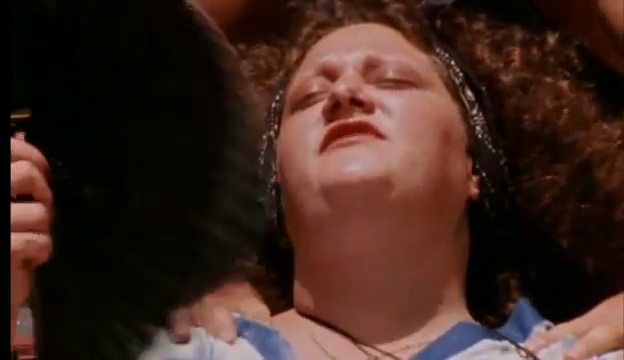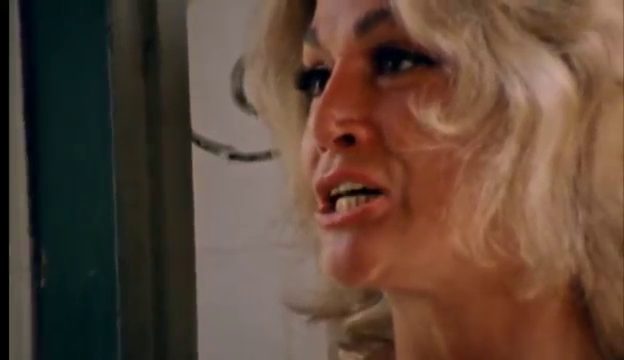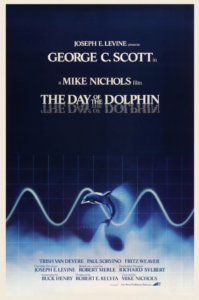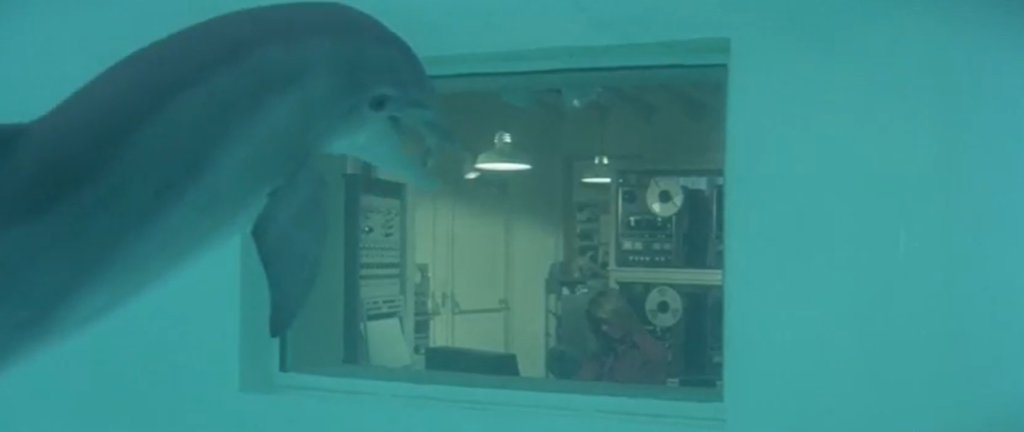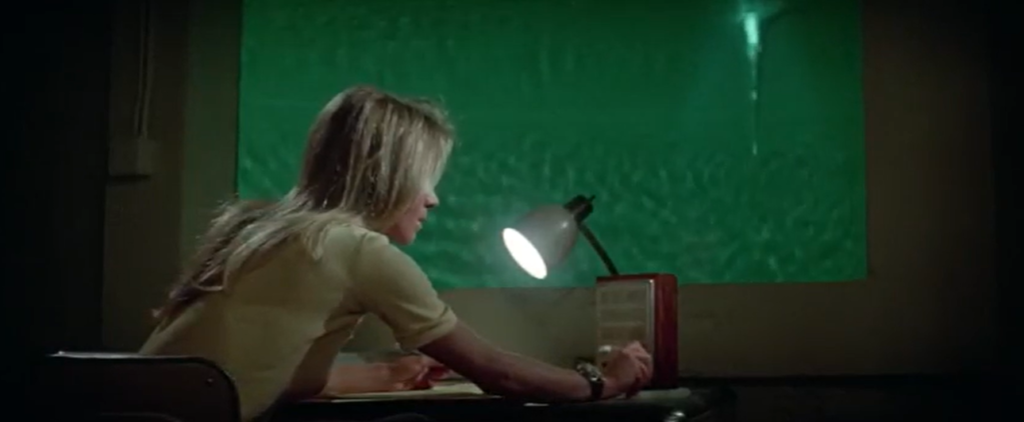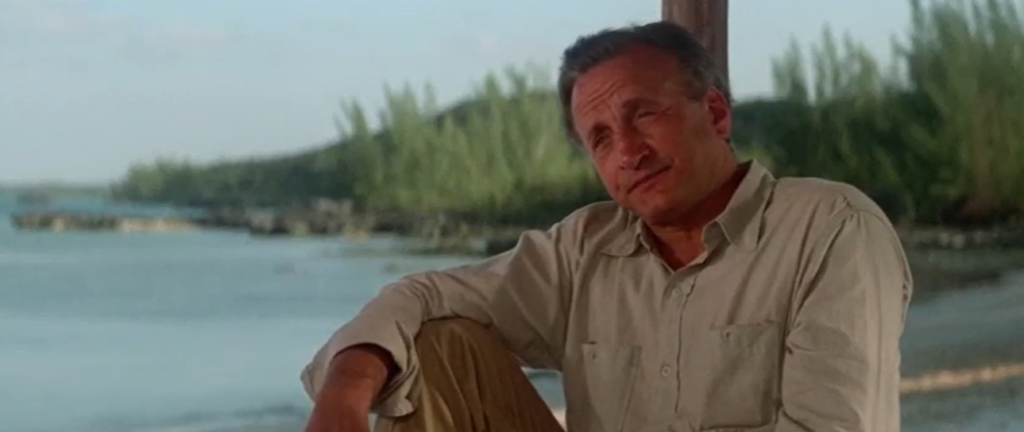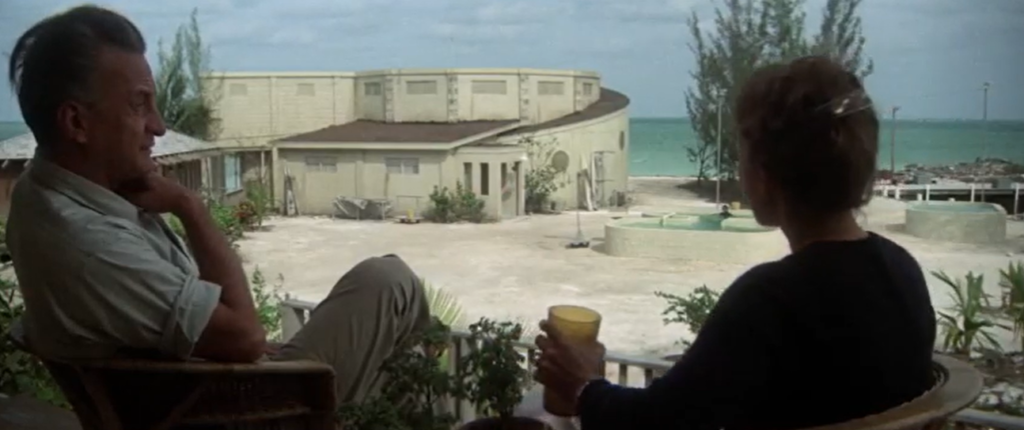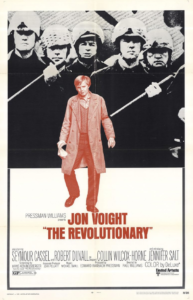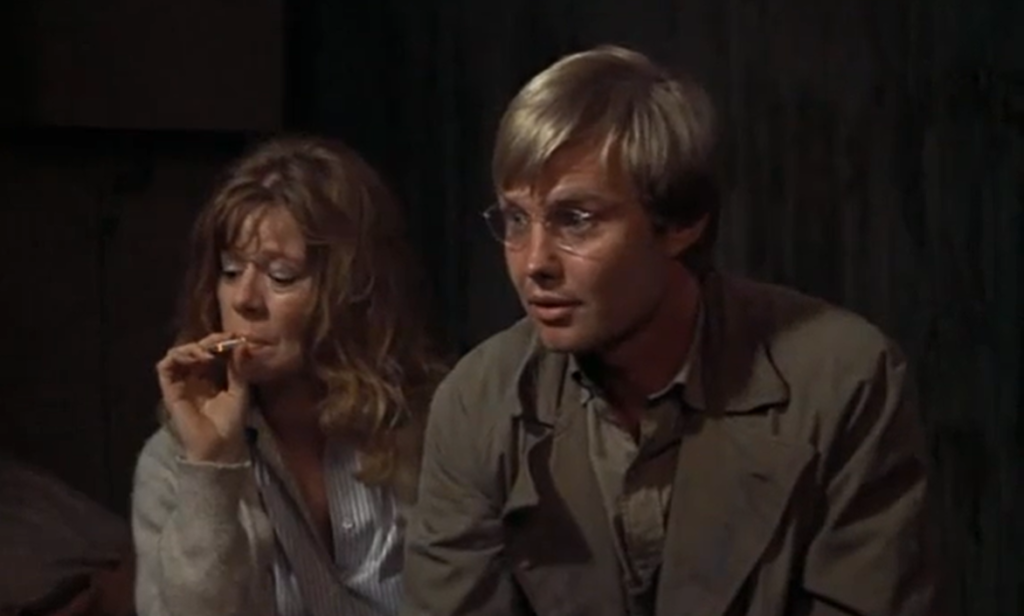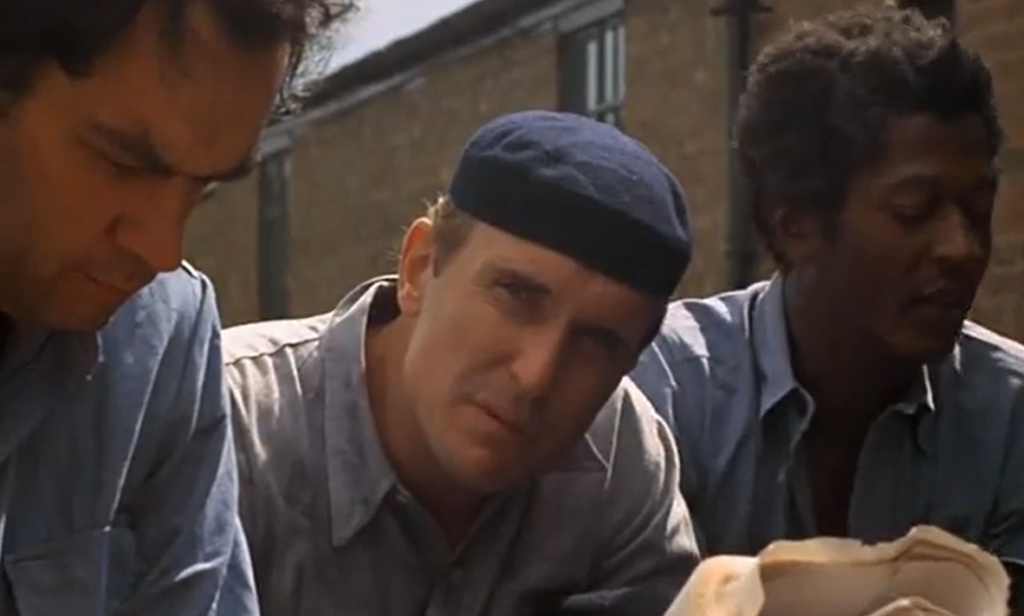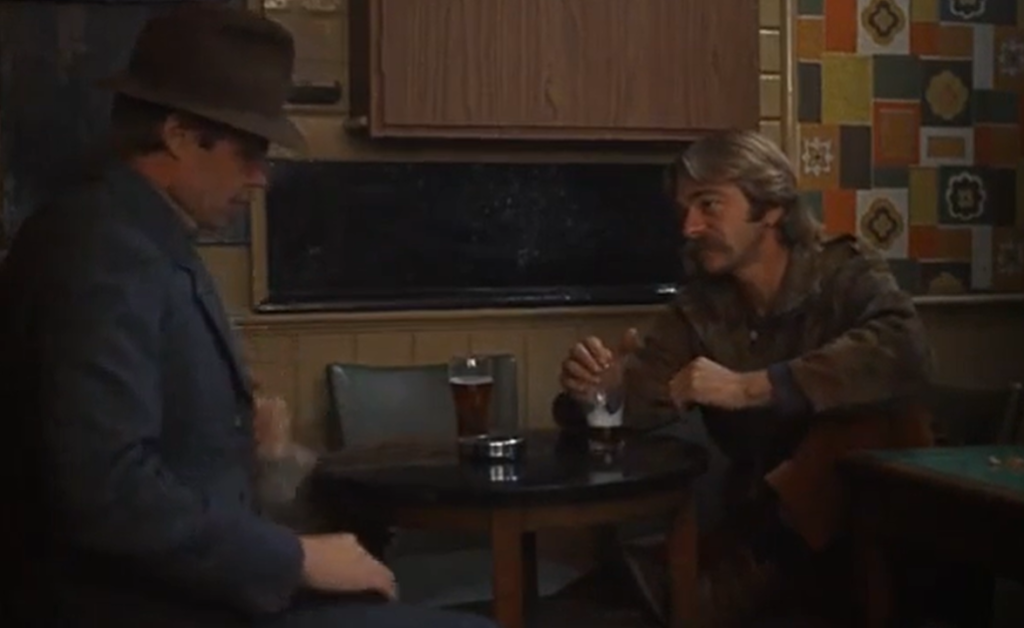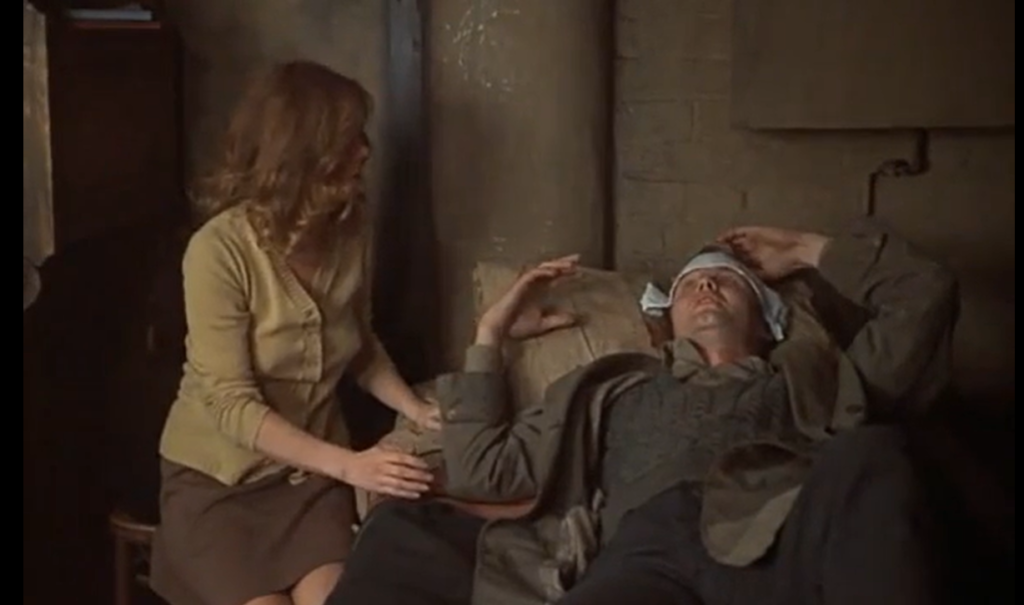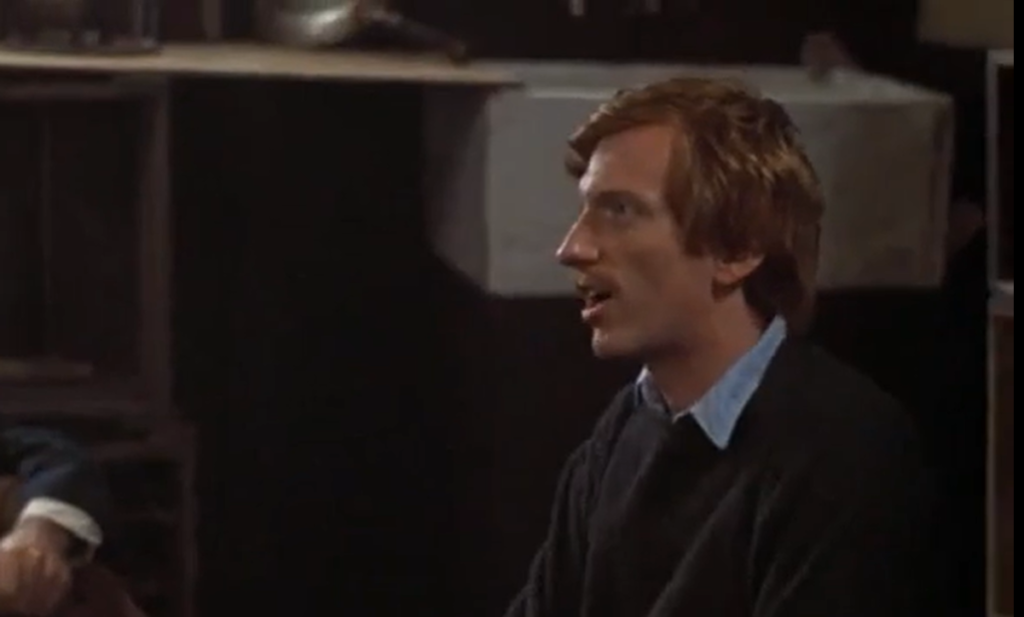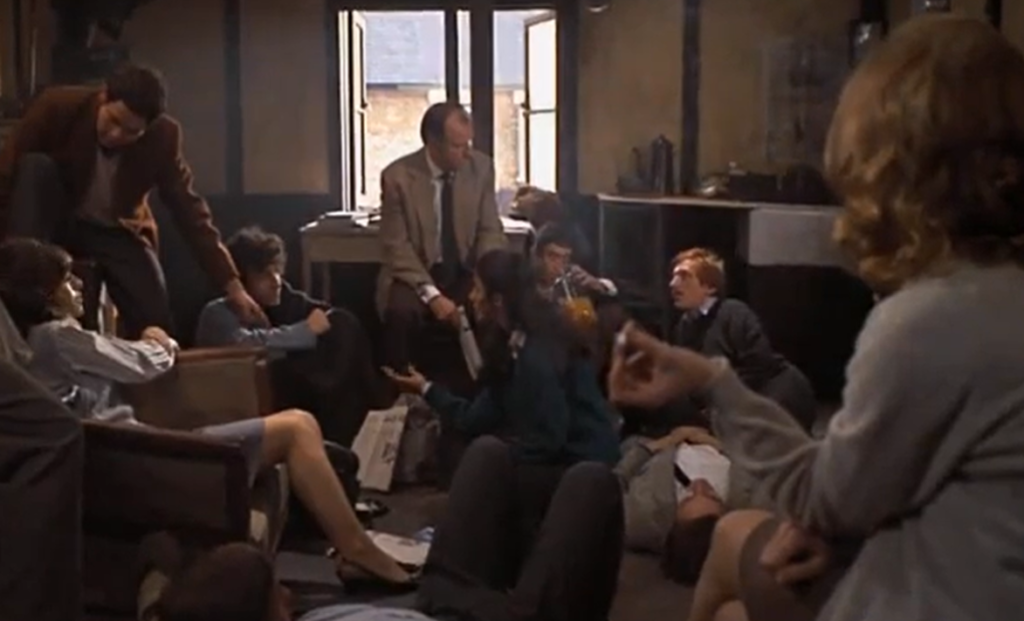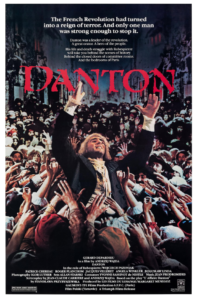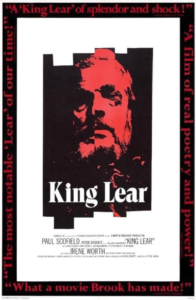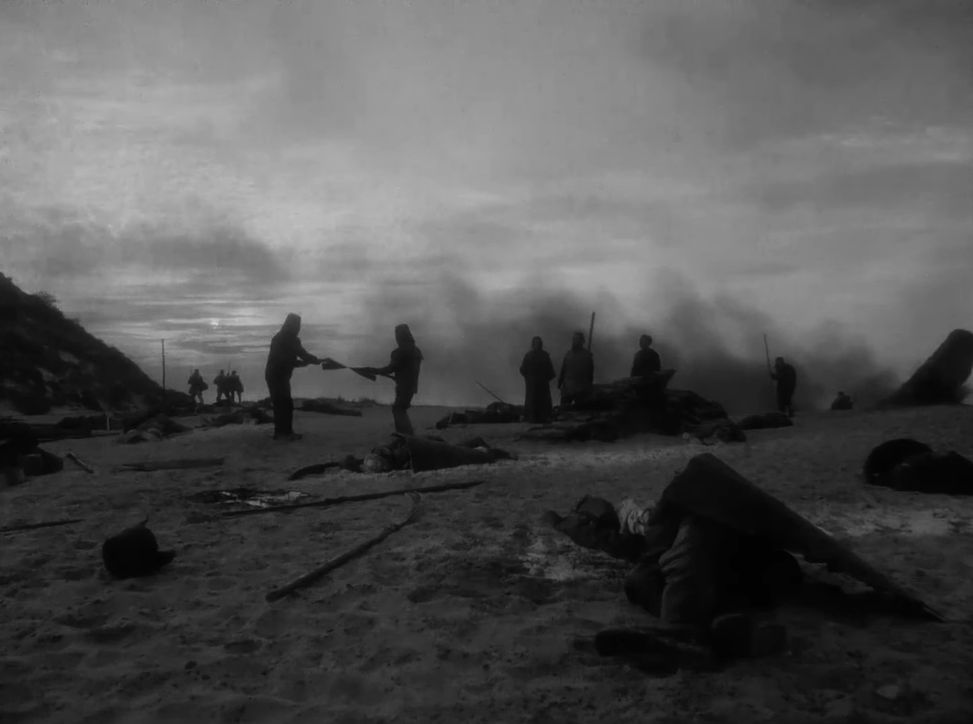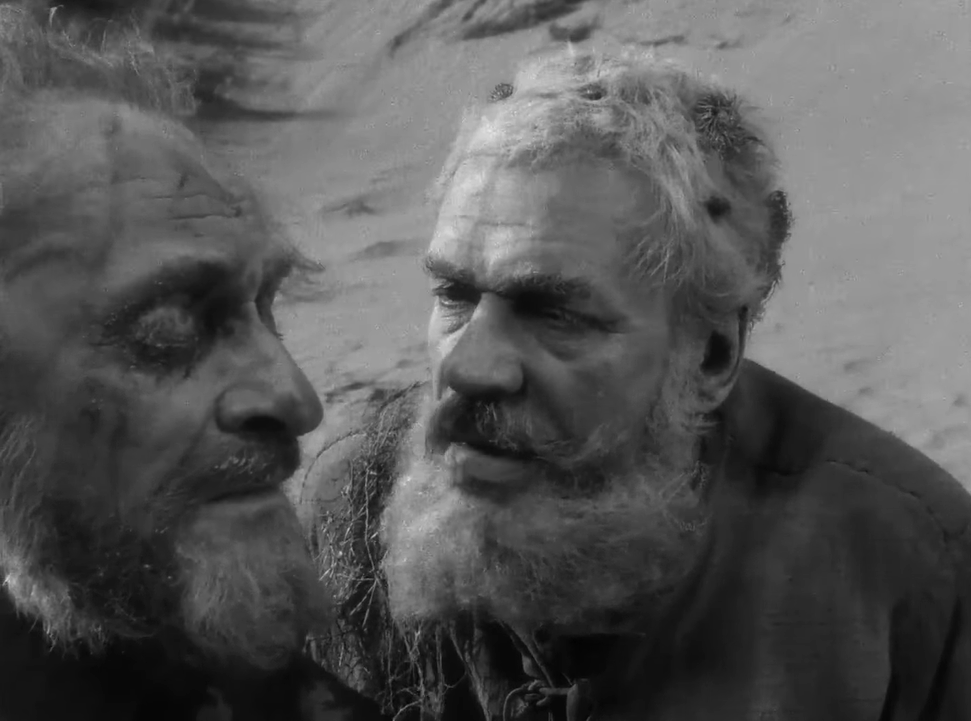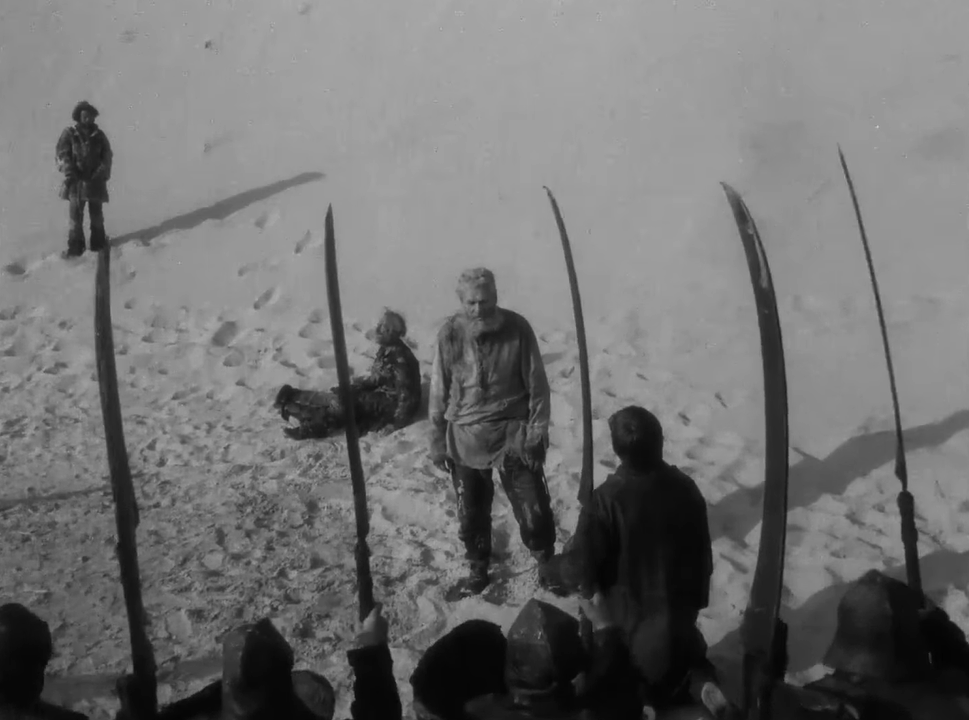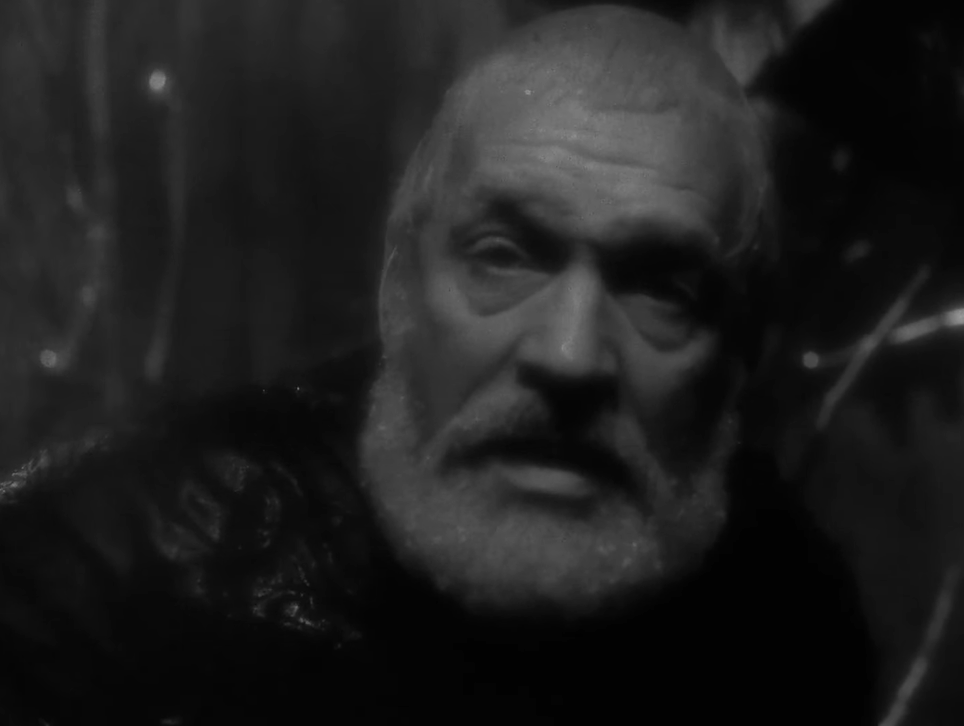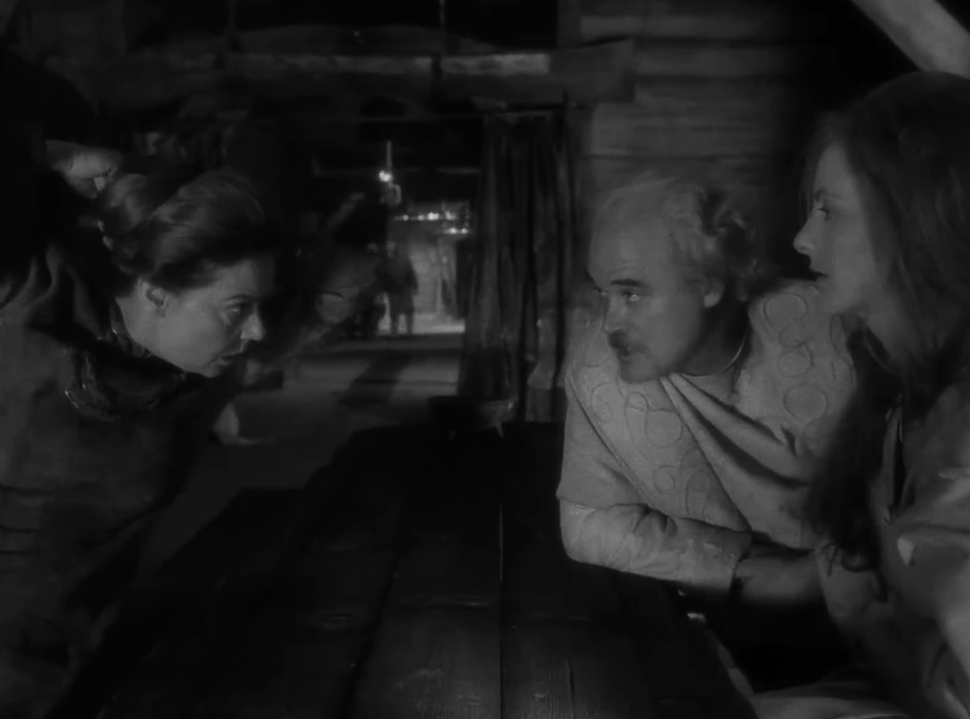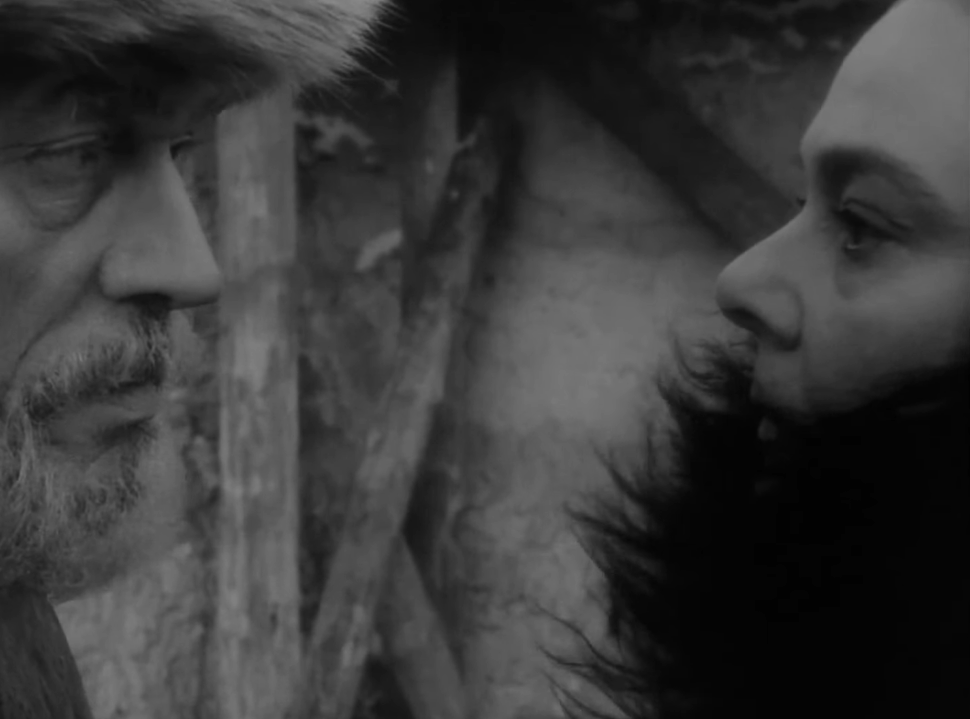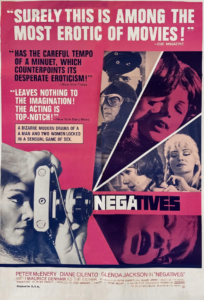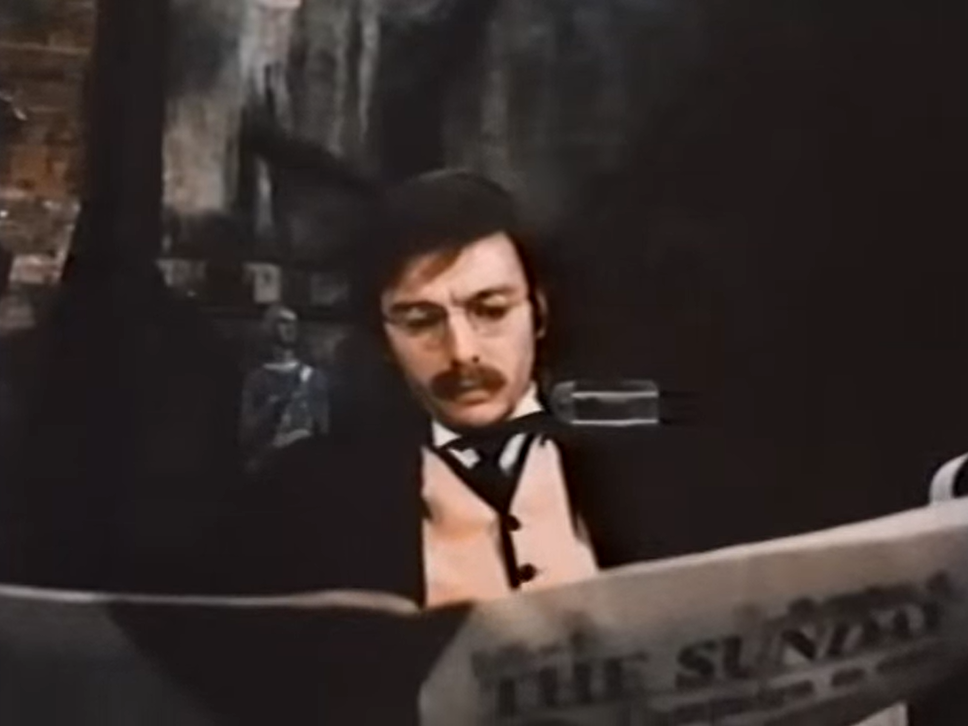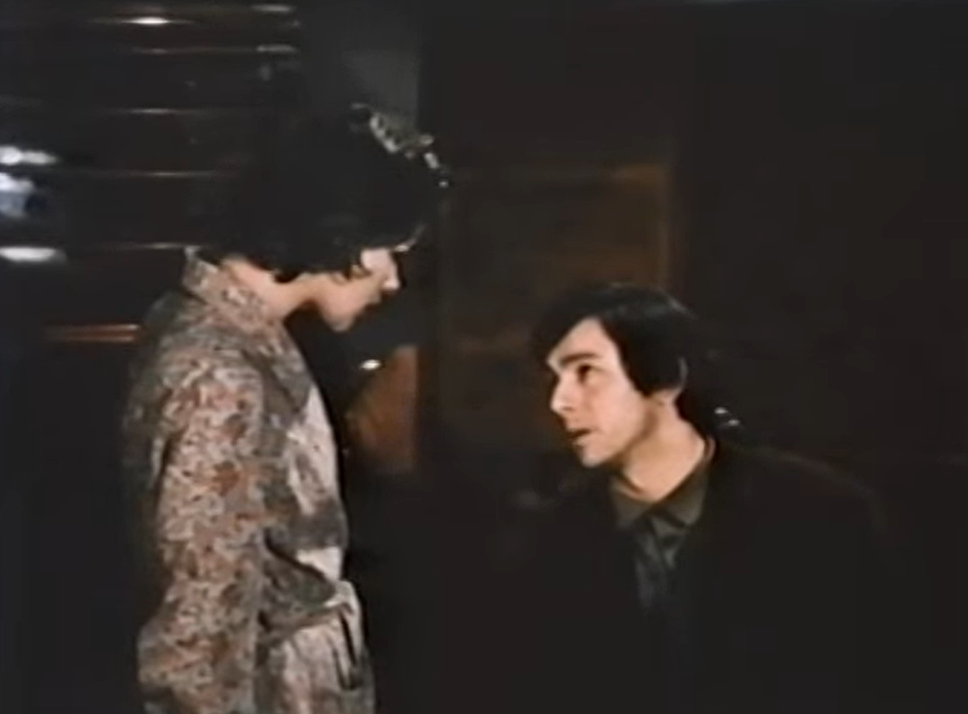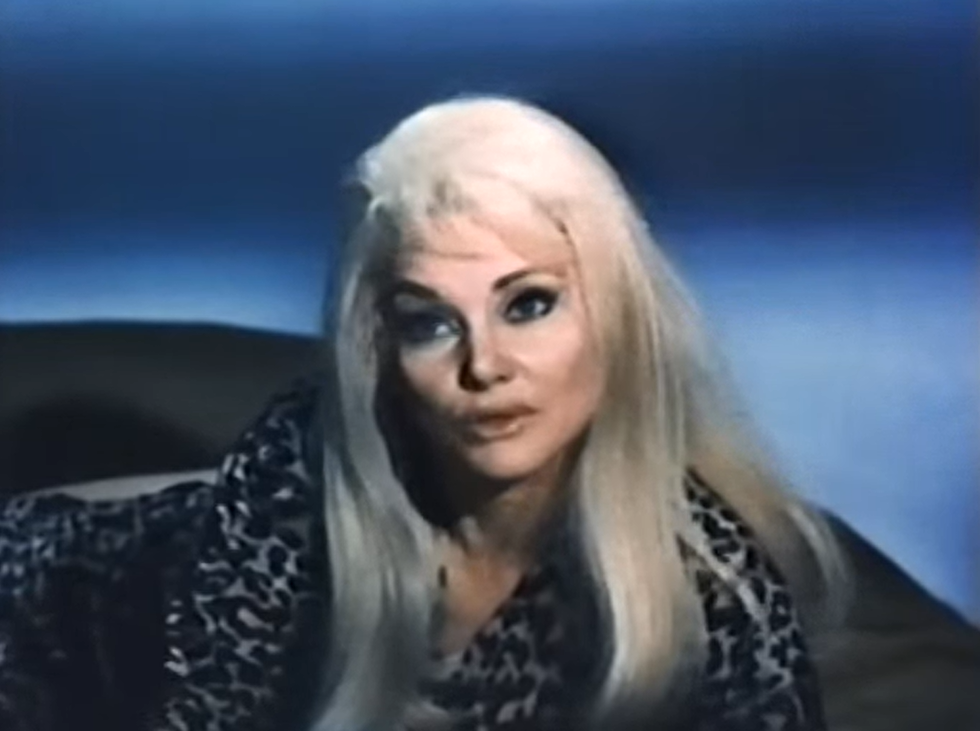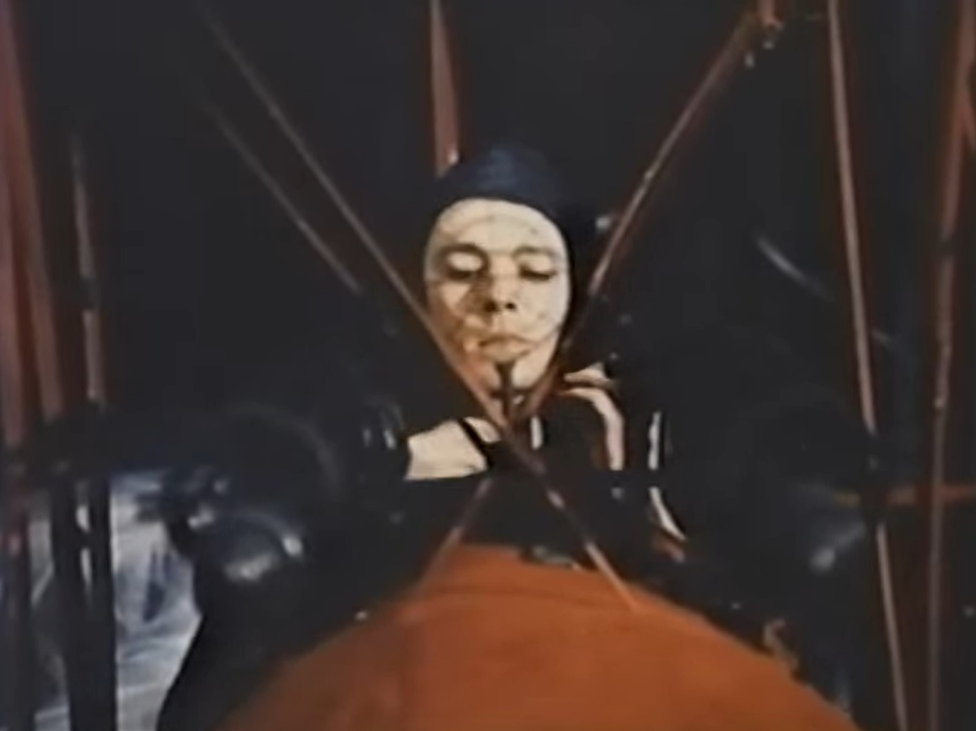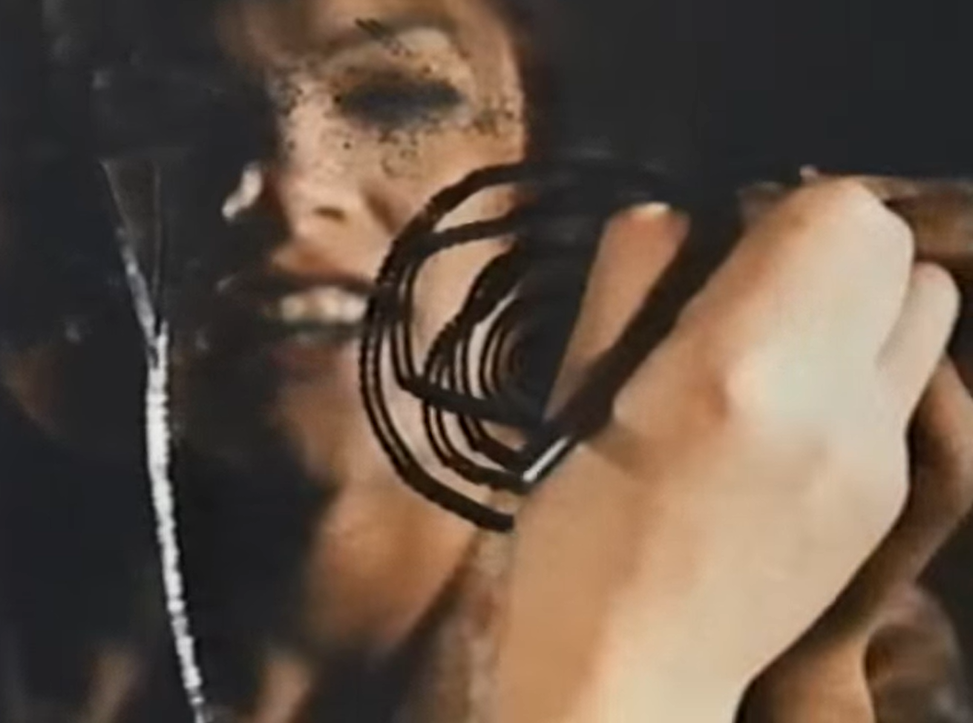|
Genres, Themes, Actors, and Directors:
- Courtroom Drama
- Falsely Accused
- French Films
- French Revolution
- Historical Drama
- Gerard Depardieu Films
- Living Nightmare
- Play Adaptation
Review:
Andrzej Wajda directed this loose adaptation of Stanisława Przybyszewska’s 1929 play “The Danton Case,” focusing on the rivalry between two Revolutionary leaders: Maximillian Robespierre and Georges Danton. From the opening moments of the film — with Jean Prodromidès’s horror-inducing score prominently featured — we see Danton riding into a rainy, desperation-filled Paris:
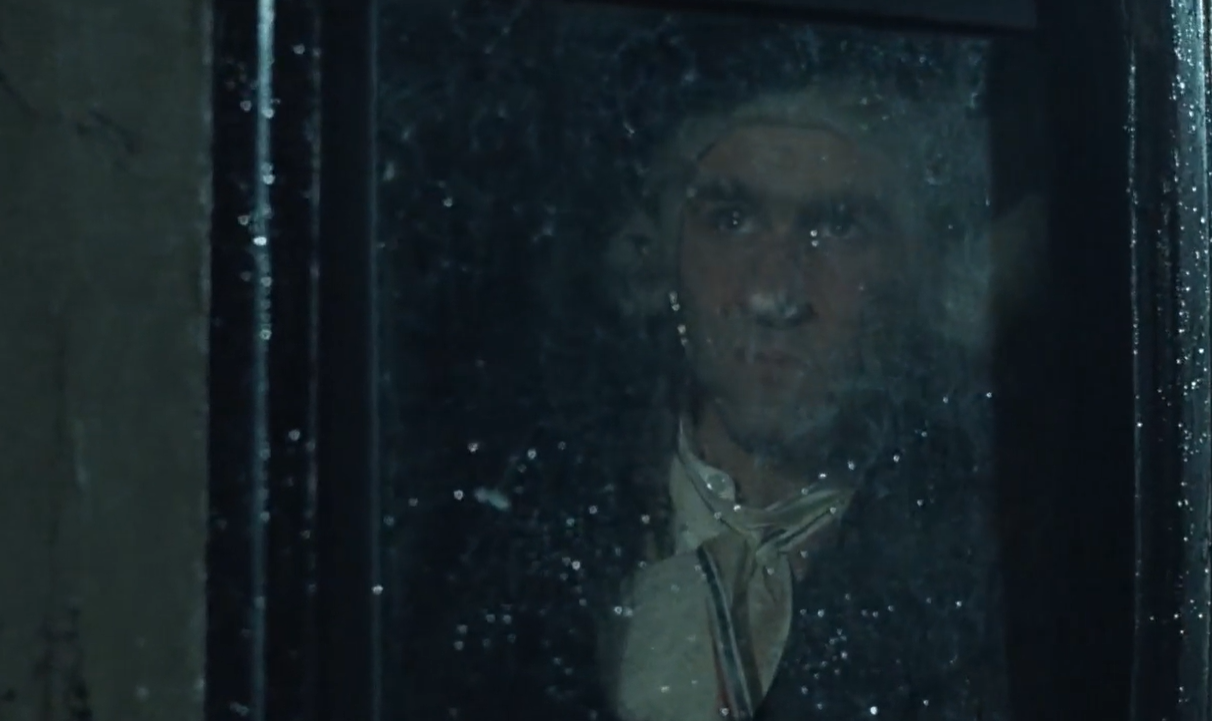
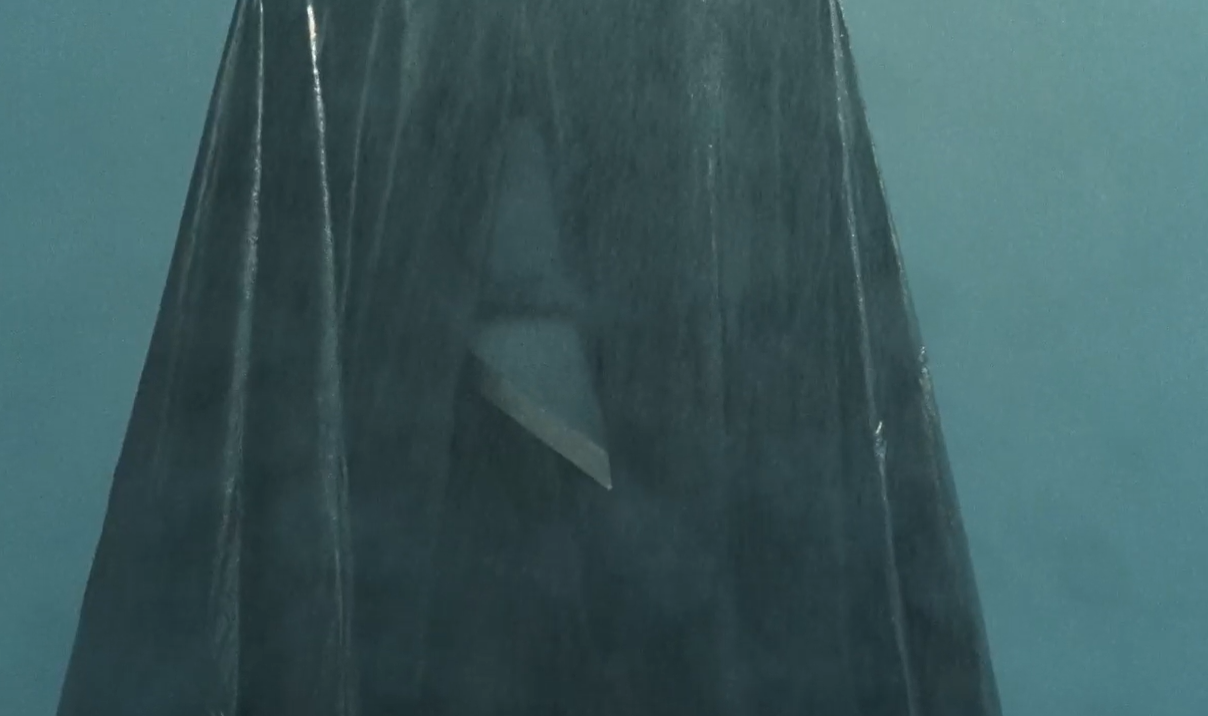
… and know things are headed for nowhere good (sorry, I had to get that pun out of the way right away). Absolutely nothing is sugar-coated here — not the despair of the starving peasants:
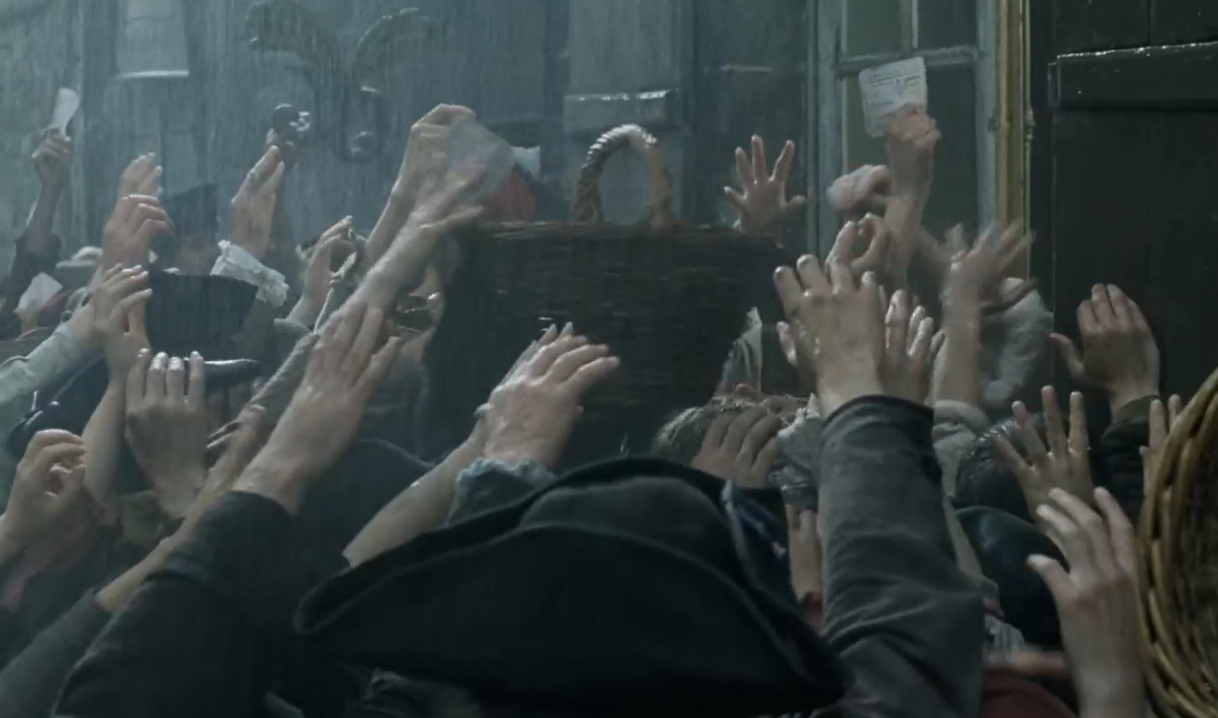
… nor the compromises required of those like print-shop owner Camille Desmoulins (Patrice Chéreau) who must choose between loyalty to their cause and the safety of their family:
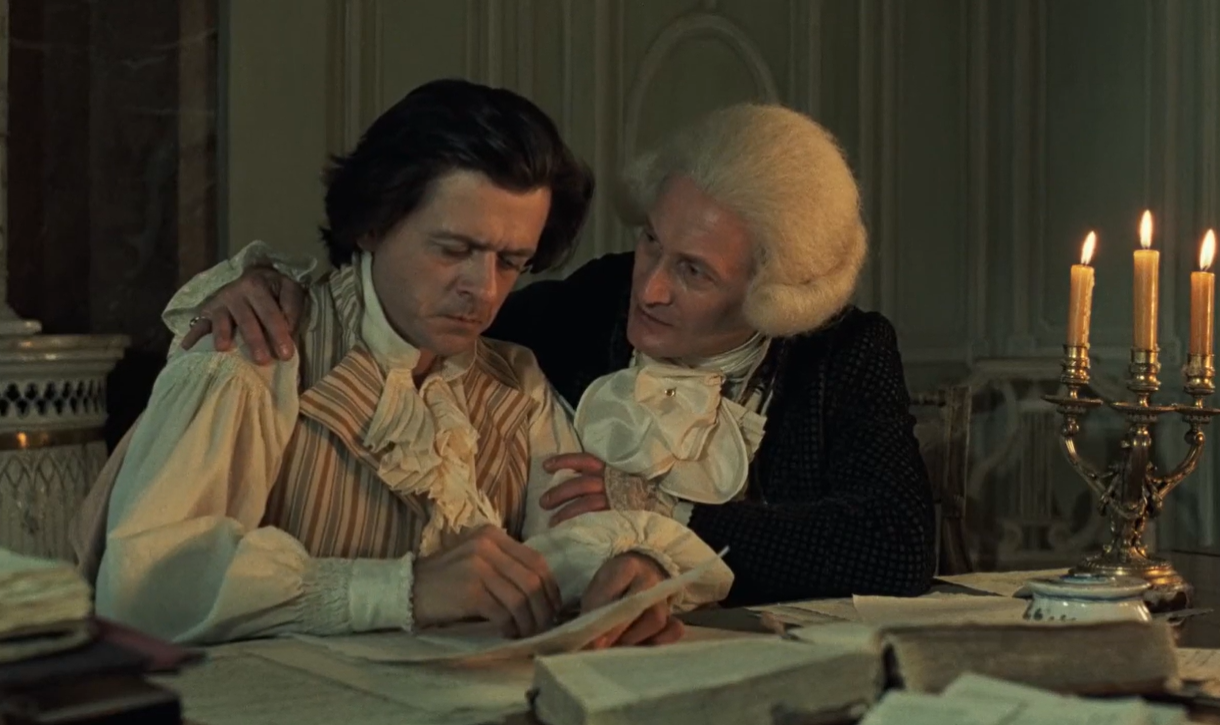
… nor the intensity of the rampant paranoia that has inevitably cropped up in the midst of such a bloody historical transition. When we first meet Robespierre, we see that he is weak and living a relatively austere life, but willing and ready to get dressed up for his very-serious work as the architect of the Reign of Terror.
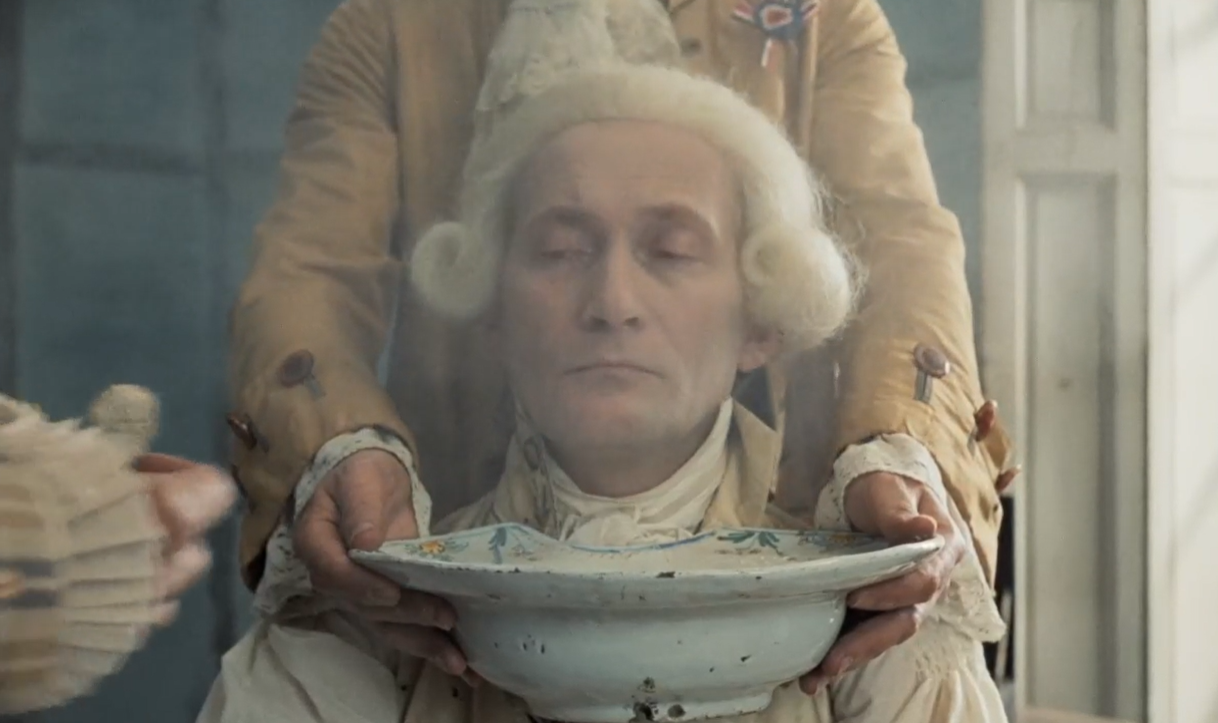
He is at first reluctant to order the execution of Danton, given that he’s seen as a hero by many; the primary plot elements for the remainder of the film center on who is involved in which potential coup against who, and which faction will act first. Because this is an historical drama, we know how things will end — which doesn’t make it any less grueling to see such mass violence, betrayal, and corruption of power playing out. Indeed, it’s hard not to despair while watching this movie — which speaks to its enduring power.
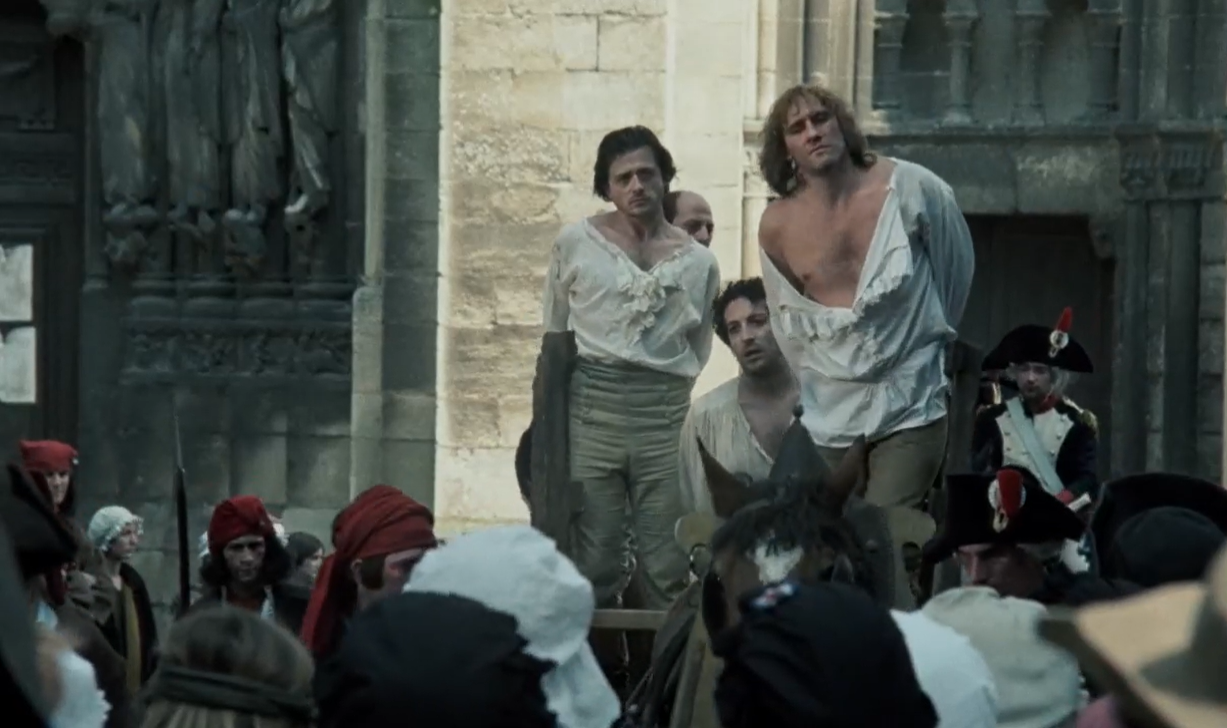
Note: Interestingly, all actors in this international co-production who played supporters of Danton were French, while those in support of Robespierre were Polish — an unsubtle choice that did not go unnoticed. According to the IMDb’s trivia section:
At the time, Poland’s Solidarity movement was very popular in France and, with the film being directed by a Polish director, Andrzej Wajda, everything seemed right for the film to be a hit. There are elements in the film that seemed to draw an analogy between the French Revolution and Solidarity’s fight against Communism. However, the Government had swung to the right by the time the film was released in January 1983. The harsh, icy portrayal of Robespierre was considered particularly objectionable and the attitude was that Wajda had denigrated the French Revolution by misrepresenting its icons.
Notable Performances, Qualities, and Moments:
- Wojciech Pszoniak as Robespierre
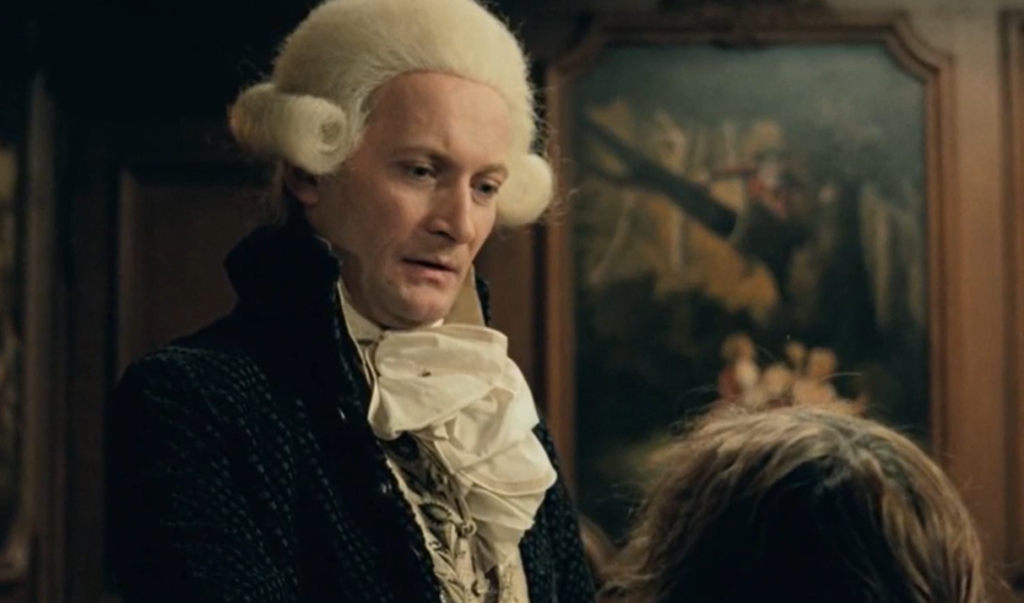
- Gerard Depardieu as Danton
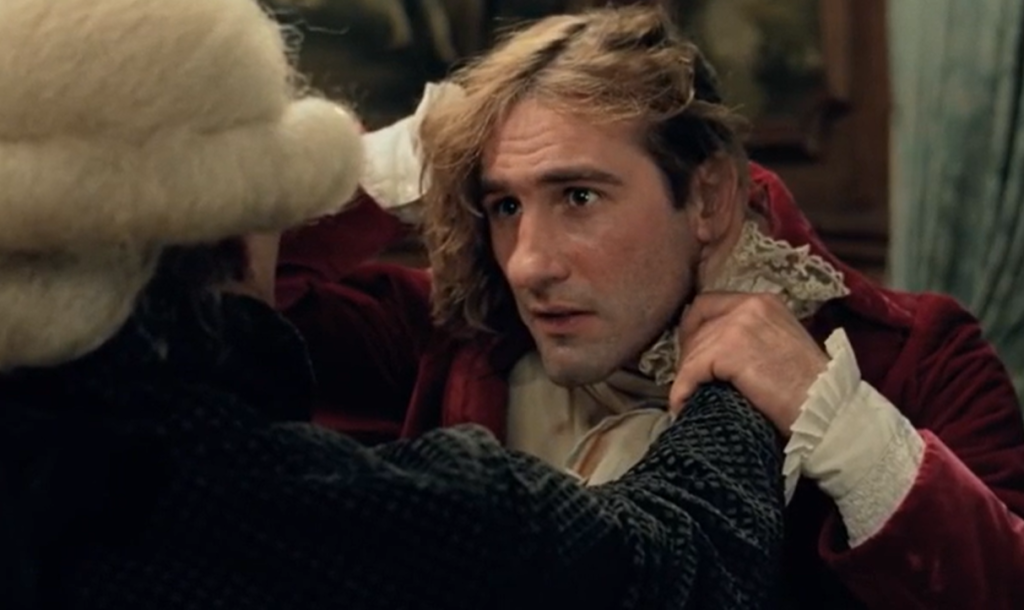
- Fine period detail and cinematography
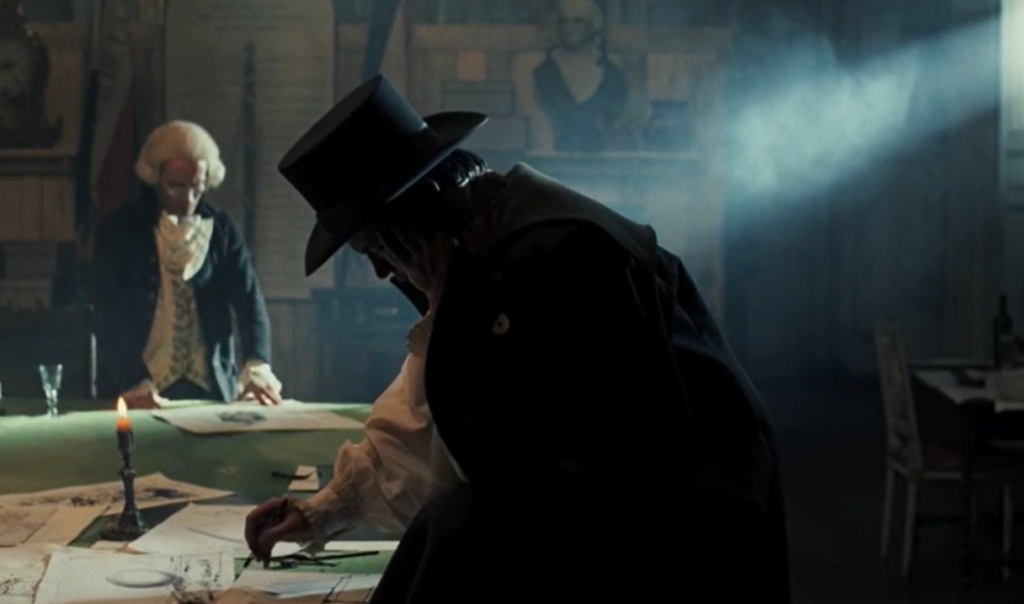
- Jean Prodromidès’s score
Must See?
Yes, as a creepily effective historical nightmare-drama.
Links:
|
